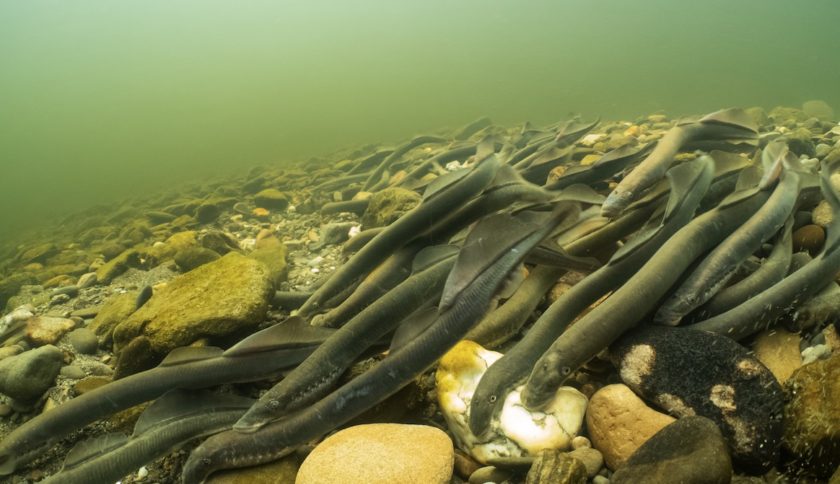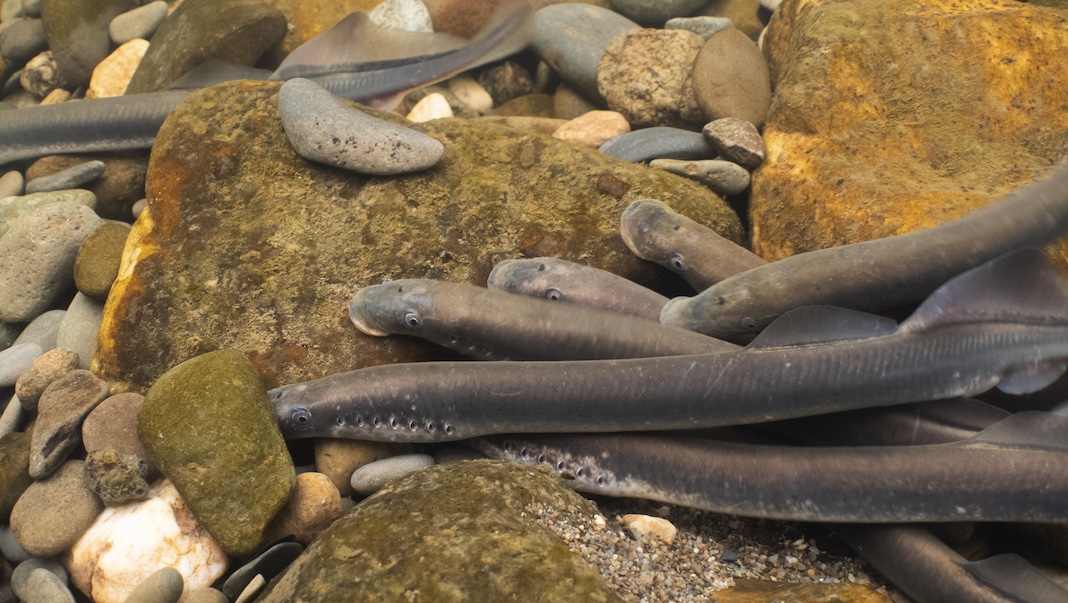LIFE Dee River project captures rare footage of ‘pre-historic’ lamprey as spawning season starts on the River Dee

Incredible video footage of spawning brook lamprey has been captured by the LIFE Dee River project, a multi million pound river restoration programme led by Natural Resources Wales (NRW).
As nocturnal creatures, this pre-historic species is rarely seen by the general public except at spawning time when temperatures reach 10 – 11 degrees and they move into shallow, clear water in broad daylight to start building their nests.
Filmed in the early hours of the morning on the upper Dee, the footage shows brook lamprey moving stones with their jawless sucker mouth to create a nest in the riverbed and begin spawning.
The females will lay up to 1500 eggs, which can be seen in the video as tiny white dots settled amongst the stones.
Having been in existence for over 360 million years, well before the dinosaurs, lamprey numbers are now in decline in the UK.
The climate crisis, and issues such as pollution, habitat destruction, and obstacles like weirs and dams, are all having a major impact on local lamprey populations, and freshwater species as a whole.
Joel Rees-Jones, LIFE Dee River Project Manager, who captured the footage, said:
“Lamprey are one of the key species our project is focusing on, so we were delighted to witness them spawning as we carried out fish tagging work in the upper Dee.
“Like salmon, and many other fish, lamprey populations are fighting for survival and urgent action is needed to reverse their decline.”
“Our project aims to restore the river to a more natural state, removing physical barriers which prevent fish migrating downstream to the sea and upstream to their spawning grounds, and reinvigorate the ecosystems they all depend upon.”
“We’re working with land managers and farmers to revive these vital habitats. We’ve already created 36km of fenced riverside corridors, planted over 15,000 trees, reintroduced 5,500 tonnes of boulders and gravel into the river, and we’re visiting farms to offer pollution prevention solutions and advice across the entire Dee catchment.”

Brook lamprey measure around 15cm long and remain in freshwater for their entire lives, living for 3-7 years in silty areas of the river. Once in their adult form, they stop feeding completely, and die shortly after spawning.
River and sea lamprey are much larger in size, around 30cm – 100cm respectively, and travel downstream to the sea to feed before returning to the river to spawn in May and June, laying between 25,000 – 30,000 eggs.
At this time of year, members of the public, the eyes on the ground, report any sightings of lamprey spawning to help map their distribution.
Data is also collected from 45 acoustic receivers secured in the river to monitor movements of river and sea lamprey that have previously been tagged with a unique identification number at Chester fish trap.
The project is set to leave an impressive legacy and ensure the river Dee and the ecosystem it sustains will be there for the enjoyment of generations to come.
The LIFE Dee River project is funded by the EU LIFE programme, Welsh Government, Environment Agency, Eryri National Park Authority, Dŵr Cymru/Welsh Water, and will run until December 2024.
Spotted something? Got a story? Email: [email protected]
Latest News
